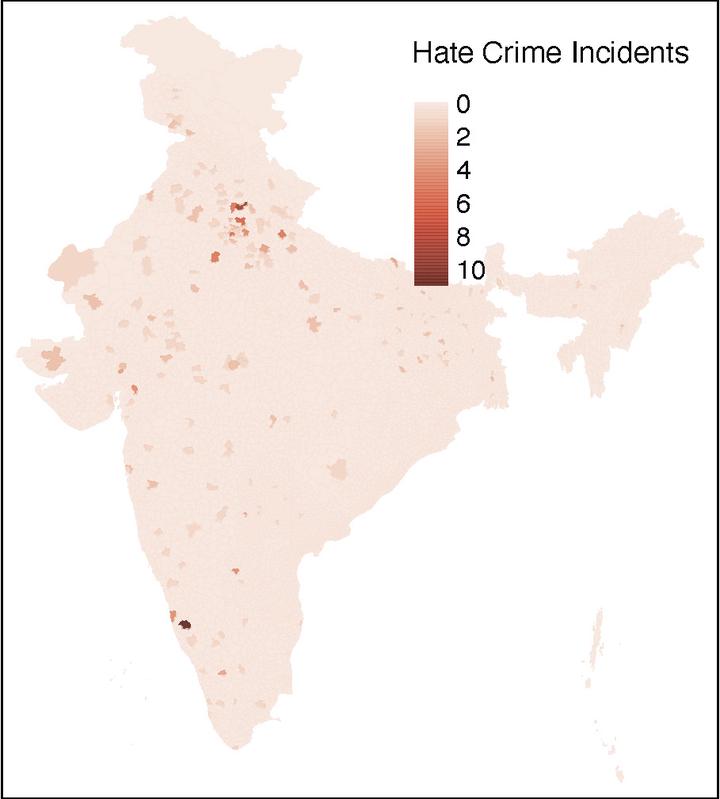Understanding Majoritarian Violence: Evidence from Hate Crimes and Crowd Violence in India
 Image credit: The Authors
Image credit: The AuthorsAbstract
Extralegal violence threatens human rights and public order in many societies. These threats are growing especially fast in India, where–against the backdrop of communal tensions at the national level–mobs increasingly punish transgressions of majority-community norms through targeted vigilante violence. Since 2014, journalists and activists have documented over 150 deadly hate crimes for alleged transgressions like eating beef or pursuing romantic relationships with dominant-caste Hindu women. In this paper, we develop a new theory explaining mob violence in India, drawing comparisons to and distinctions from extrajudicial violence in other contexts. We use newly-available data to show that spatial variation in fatal hate crimes in India is strongly associated with the strength of majoritarian institutions, measured via the presence of majoritarian-ideology schools. Using model specifications that account for the timing of new majoritarian institutions being introduced to a community, we show that the violence is concentrated in communities where the majoritarian institutions have persisted longer, not in areas of new expansion. We contextualize these findings by examining three recent high-profile hate crimes in India and identifying patterns in the characteristics of hate crime attacks: Attacks often seem spontaneous and mass-driven, but they are usually coordinated by a core group of perpetrators; the core group is often affiliated with a durable organization; and core group perpetrators frequently use the spectacle of violence to generate a larger group of peripheral participants and bystanders. While most recent literature on vigilantism finds that mob justice substitutes for capable state law enforcement, our evidence suggests that India’s hate crime crisis is associated with the rise of para-statal organizations that operate even where there are no state capacity vacuums to fill. Rather, as local majoritarian institutions emerge, they may use violence to challenge local state strength. Because vigilante violence in India is not spontaneous or a grass-roots response to state weakness, we caution that efforts to increase the capacity of local law enforcement or the legal system are unlikely to curb majoritarian violence.